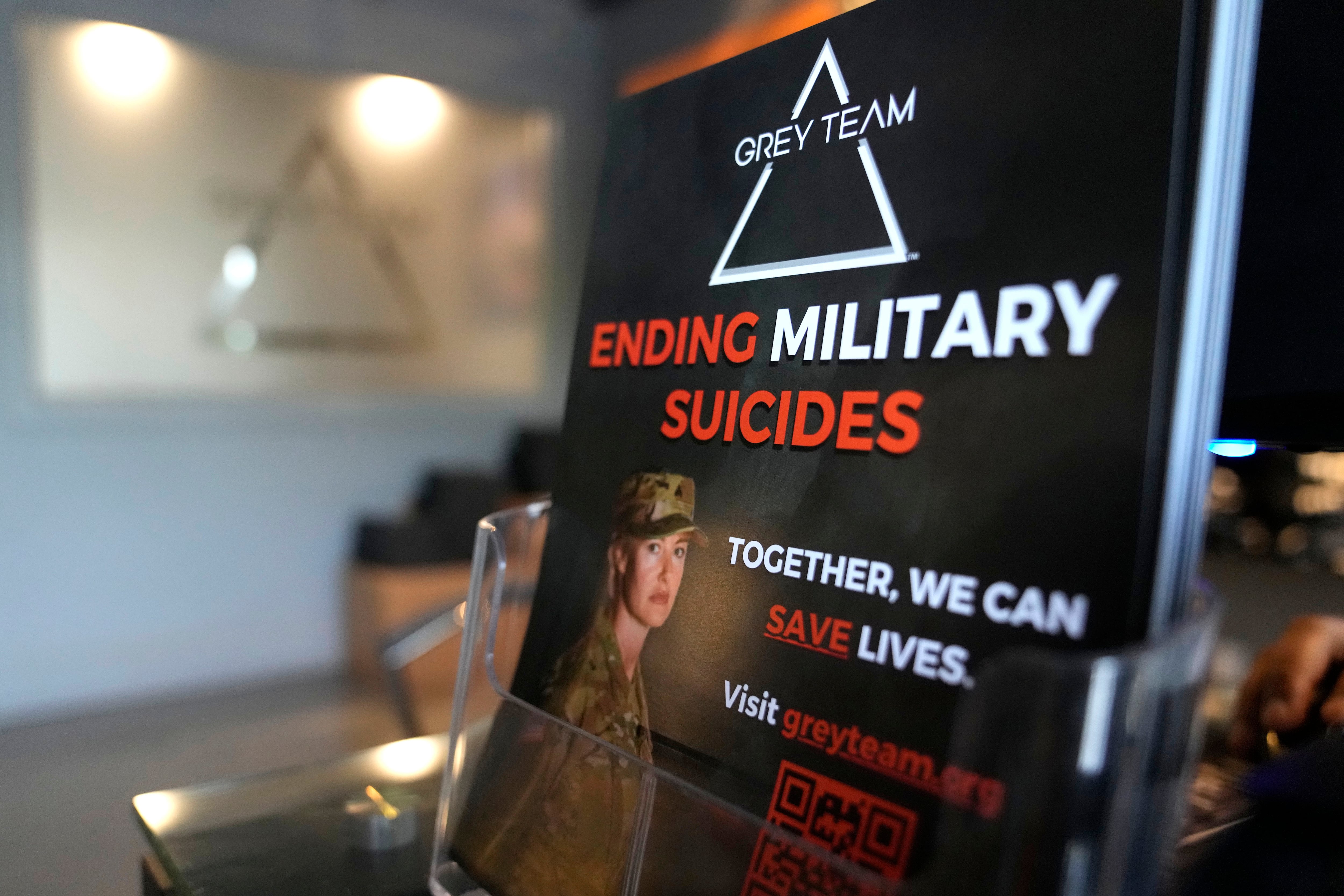AL UDEID AIR BASE, Qatar — Air Force Maj. Gen. Jay Silveria examined the photos arrayed on a table in a conference room. The grainy pictures showed a small oil well and collection pool operated by the Islamic State in the Syrian desert.
The targeting officer gave Silveria a brief pitch: This was an opportunity to hit a key source of Islamic State revenue. No civilians were around, and a pair of U.S. A-10 attack planes could get there quickly. The general turned to a military lawyer to see if he had any legal concerns. He didn’t.
Silveria gave his OK, and the planes destroyed the oil well.
The strike is one example of how the U.S. operation against the Islamic State militants in Iraq and Syria has become the most tightly managed air campaign in the history of warfare. USA Today was granted rare access to the command center here to witness how the team carries out that campaign.
Every strike has to be approved by an officer with the rank of a one-star general or higher. The targets are scrutinized not only for their potential for collateral damage, but also "proportionality" — whether the military value of the target is worth the time and cost of a strike and furthers the aim of the overall campaign.
Staff officers have developed complex formulas for estimating the potential for civilian casualties on any given target and what type of bomb to use to achieve a specific goal. Planned, or "deliberate" targets, which can include a cash warehouse, car bomb factories or militant communications facilities, take an average of four to six weeks for approval. However, "dynamic" targets of opportunity, like the oil well, account for 85 percent of the strikes and can be approved in minutes if a high-level officer signs off.
The number of confirmed civilian deaths in nearly 15,000 coalition strikes since the air war began in 2014 is 55, according to
. An additional seven allegations are under investigation, and actual casualties are likely higher, since the military's estimates includes only those it has confirmed through a rigorous process.
"Most times we’re trying to drive it to zero civilian casualties," said Lt. Gen. Jeffrey Harrigian, commander of the air campaign in the Middle East.
Critics say the regulations to avoid non-combatant deaths are excessive and have undermined the effectiveness of the air campaign. Senate Armed Services Committee Chairman
, R-Ariz., complained last year that three-quarters of the coalition’s aircraft came back to base without having dropped their weapons.
"It’s a very convoluted system for fighting a war," said
, a retired Air Force general who commanded air operations during the 1990-91
. "We’re fighting with one arm tied behind our back."
The military counters that today's munitions are far more precise than the bombs dropped over Iraq during the Gulf War's "shock and awe" campaign. Intelligence also has steadily improved, allowing pilots to kill top Islamic State leaders and destroy targets such as the oil well, which reduce the terror group’s income.
Inside the command center
The air war in Iraq, Syria, Afghanistan and other parts of the Middle East is run from this sprawling desert base outside Doha, the capital of Qatar. Inside a massive windowless concrete building, protected from the stifling desert heat, military men and women monitor banks of computer screens in a large, two-story room. On the walls above their heads are rows of screens, displaying surveillance video from throughout the region.
It’s a long way from previous wars, when bomber pilots would take off with targets marked on a map and drop "dumb" bombs with little or no communication with their home base. The bombs would often flatten entire city blocks or more.
Today, technology allows commanders to control events thousands of miles away. The process for choosing ground targets begins with a nomination that could come from an intelligence analyst, ground forces or a pilot who sees a potential target, such as an enemy position, an oil well or a warehouse where the Islamic State stores cash.
If selected for further review, analysts will gather surveillance video and other intelligence that will establish a "pattern of life" around the target.
Analysts assign the target a collateral damage estimate based on its proximity to civilians and the extent that danger to them can be lessened. If there is a risk of hitting nearby buildings, they mitigate the risk by choosing smaller bombs or a fuse that can delay the explosion, so, for example, a bomb would only detonate after it penetrates the target.
Military officers plot each bomb’s point of impact on a building or other target, allowing them to measure precisely the blast radius of each explosive they will drop. The selection of munitions can produce a precise impact. Recently, a communications tower near a school was hit so that when it collapsed, it fell away from a cluster of nearby buildings.
The analysts also reduce risks to civilians by determining when to strike, such as at night when civilians wouldn’t be around.
Even after all those precautions, pilots will abort a mission if civilians unexpectedly approach a target by car or foot as the bombing is about to begin.
For U.S. advisers or the Iraqi or Syrian ground forces they are working with, the wait for an OK can seem excruciating. In June, coalition aircraft unleashed a massive airstrike on several Islamic State convoys fleeing
in western Iraq. Approval came only after surveillance drones viewed the targets for hours to ensure there were no civilians inside the convoys.
Missed opportunities?
Coalition commanders point out that intelligence has improved during the air war, allowing pilots to attack an increasing number of targets, despite the restrictions.
Pilots dropped an average of 496 bombs and other munitions per week this year, up from 144 in 2014, the year the air war began.
Targeting the militants’ cash warehouses and oil facilities has forced the Islamic State to cut pay to civilian workers by 50 percent and pay to its fighters by 20 percent, according to Harrigian, the campaign's commander.

Air Force personnel monitor radar and communications traffic from a surveillance plane over Syrian airspace.
Photo Credit: Staff Sgt. Douglas Ellis/Air Force
Those figures don't satisfy critics who say some targets are not hit because the approval time is too slow, and a more robust campaign might increase the risk to civilians but end the Islamic State's reign of terror sooner.
"I don’t care how much live communications you have, there’s no way you get through layers of bureaucracy quick enough," said Chris Harmer, an analyst at the
and a former naval aviator.
"If our prime goal is minimizing civilian casualties, then let’s just throw in the towel and walk away," Harmer said. "People will accept civilian casualties as an inevitable by-product if they think there is a strategic goal of defeating the enemy and replacing it with something better."
Geoffrey Corn, a former Army lawyer and expert on wartime law, defended the military's emphasis on avoiding civilian casualties as a necessary objective to prevent a backlash against the air campaign from the local population. "Ultimately it’s beneficial because it serves a strategic interest," Corn said.
Hundreds of thousands — if not millions — of civilians have died in previous wars. But global public opinion would no longer accept casualties anywhere near that level, analysts say.
"The application of force is driven by the political climate of the time," said Dik Daso, a military historian and professor at the
. "People have come to believe that we can really do anything with these weapons and there is no excuse for hitting civilians."





